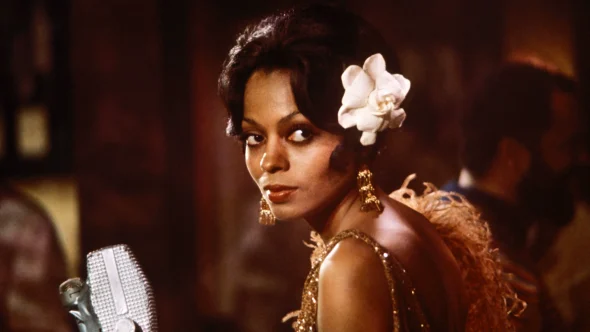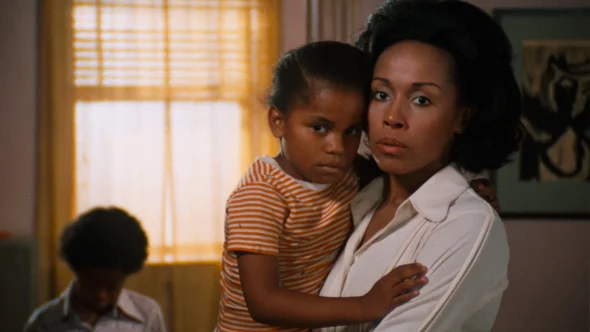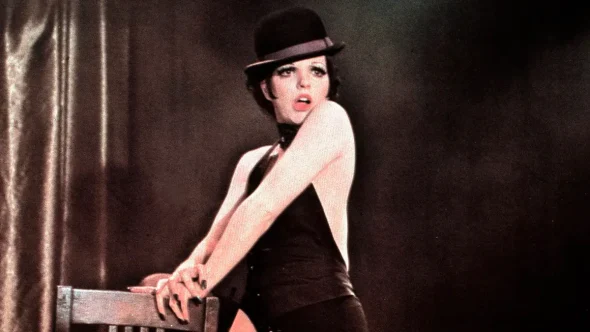
I was 8 years old when I saw Lesley Ann Warren in Rodgers & Hammerstein’s Cinderella. I was visiting my cousin in the projects and there were mice running all through that one-bedroom apartment. We were seven of us on the bed, throwing things at the mice to keep them away. And as I watched Lesley Ann Warren’s Cinderella, I knew. I looked at the mice that were on the television, I looked at the mice we were throwing shoes at, and I knew that, like Cinderella, there was a prince coming to take me away. I knew that, if I dared to dream, I would not be in the environment that I was in for long. That’s the power of storytelling.
Lesley Ann Warren made me know that dreams were possible. She sang: 'Impossible things are happening every day … For a plain yellow pumpkin to become a golden carriage. Impossible.' I knew in that little room that I was in, that dreams do come true. And if I dared to dream, I would transport my Black a** out of there.
[With each movie I make,] I’m bringing my vulnerability. I’m bringing my insecurities. Now, I’m bringing everything that I have in common with Billie Holiday to the screen. I’m bringing my grandmother, and all of my past, and my family. I’m bringing all of Harlem and Philadelphia and Baltimore to the ’50s and ’60s; my experience as a kid, what I know to be the truth of our people. I’m bringing all of that to Billie. I hope all my movies tell the Black experience, the complicated Black experience, in the most authentic of ways.
I don’t think Billie understood that she was a civil rights leader, that she was kicking off the civil rights movement as we know it to be. She was just doing the right thing. And I think that if a queer Black woman in the ’50s could do this, and stand up to the government, it says a lot about what artists today should be doing. We have the power to change.
Below are five films that have influenced Lee Daniels over the course of his career.
This article was originally published on Feb. 23, 2021.

It was Lady Sings the Blues that got me into directing. That was when I understood that I wanted to make a film. I realized that that was the feeling that I wanted people to feel. I’d never seen Black people looking that fabulous before. They were beautiful. And it was the first time I’d seen Black people kiss on screen, ever. I didn’t know it was possible. If you completely study my work, you’d be able to pick out what really was ingrained in me by watching Diana Ross, Billy Dee Williams and Richard Pryor. You have a combination of this beautiful fashion and the ugly of Harlem—and yet, the beauty of Harlem. And the music.
That world of Black beauty in Harlem … I wanted people to feel the way I felt when I first saw that film. That was the film that kicked it all off for me.
As a matter of fact, with United States vs. Billie Holiday, I brought both my leads [Andra Day and Trevante Rhodes] in to come watch it, to understand the type of chemistry that Billy Dee Williams and Diana Ross had. I told them that we needed to match that and bring that to 2021.
I think the performances are what’s brilliant about the film. I think the film is flawed in places, as I’ve watched it a second time, and a hundredth time, but [Diana’s] performance certainly did earn her that Academy Award nomination.

Diahann Carroll reminded me of my mom. My dad died when I was 13 and my mom was left to raise five kids on her own. That environment was very similar to mine growing up. I remember this elegant Black woman that looked similar to Diahann Carroll, raising these outrageously, impossibly, nightmarish brat kids, and her trying to have men over and we’d all chase them away. Very much like that James Earl Jones character was portrayed. And then Curtis Mayfield’s incredible score with Gladys Knight & the Pips; that score lived in my head. It was just beautiful.
I first watched Claudine with my whole family. My mother took us all to the theater. I was 15 when it came out, the same age as the kids were in the movie. I really identified with that story. It impacted us deeply, my whole family. We cried at the end.

I was attracted to the performance by Gena Rowlands, the framing and the handheld, raw and honest work of John Cassavetes; his ability to handle the camera and capture the performances almost docu-style. That handheld-ness of it all that you see—I stole a lot of that for Precious.
It’s almost like you’re in the room in these scenes. You’re a fly on the wall, looking at people, and that’s stayed with me throughout all of my films. It’s how I want the audience to feel. Cassavetes certainly always made me feel that way.
And that love story is such a unique story. The unique storytelling, unique writing. It was the idea of this mother-son love affair. It’s just so beautiful. And a gangster to boot? That poster still sticks in my head with that gun she had. Come on!

I had never seen anything like it before. At first, I thought it was conceited and pretentious. And then, a quarter of the way into the film, I realized that that was part of the journey we were on. It’s visually intoxicating and you are swept away by imagery—the imagery is as important as the acting. I think it’s true cinema at its best.
The importance of production design and costume design is my takeaway from that film. You’ll see that there are many scenes where the costumes and the backdrops are seamless. It’s part of the tapestry of the storytelling. I hate it when people try to rip Wong Kar-wai off from that film. I’ve seen a couple of filmmakers attempt to sort of replicate it, and it’s so clear, but you have to give it a nod. So I try to give a nod in Billie, in that the costumes and the production design are one. It’s all part of the tapestry.

All That Jazz stays with me for the realness of what Bob Fosse was able to do with his story. As a person with a complicated life, it reminds me of me a little bit—it reminds me of me a lot. I love that he was able to have the audacity to tell his life story on screen like that. I am in awe of his ability to turn dance numbers into story. I relate to the groundedness of it. And his casting choices, and his editing is seamless.
Still, Cabaret is my favorite. Everything else applies, except him telling his life story … but it’s so much of a good life story when you think of him growing up in strip clubs, and his understanding of women in a way that only he could express. He didn’t just ogle over beautiful women, or what people perceive to be the norm of beautiful women. He ogled over all different types of women, all different shapes of women. His celebration of women, or what he thought to be a celebration of women, is what I connected to in Cabaret. And just the uniqueness of the story. His editing. His style. The dance numbers. It was groundbreaking cinema.







